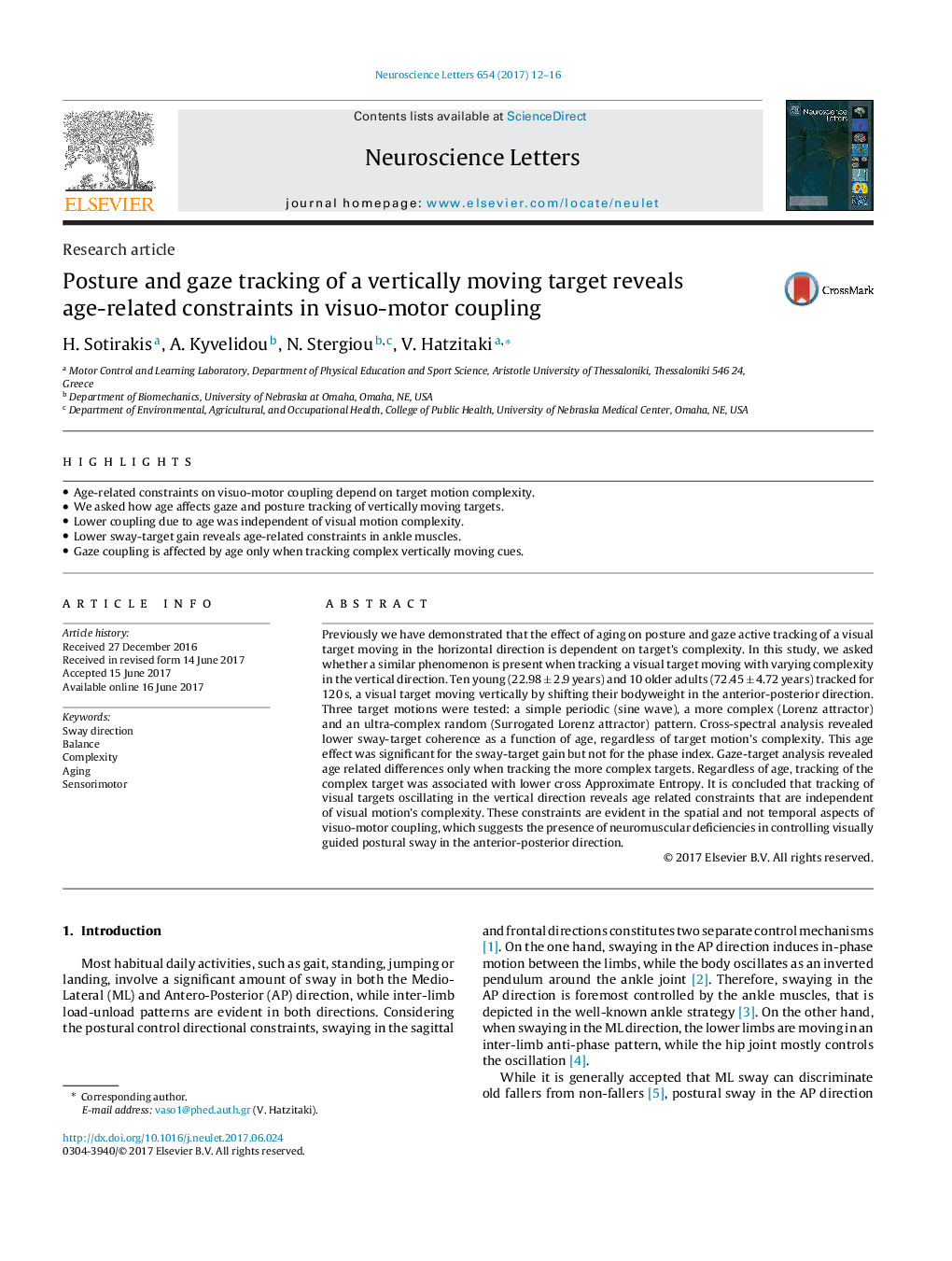| کد مقاله | کد نشریه | سال انتشار | مقاله انگلیسی | نسخه تمام متن |
|---|---|---|---|---|
| 5738617 | 1615045 | 2017 | 5 صفحه PDF | دانلود رایگان |

- Age-related constraints on visuo-motor coupling depend on target motion complexity.
- We asked how age affects gaze and posture tracking of vertically moving targets.
- Lower coupling due to age was independent of visual motion complexity.
- Lower sway-target gain reveals age-related constraints in ankle muscles.
- Gaze coupling is affected by age only when tracking complex vertically moving cues.
Previously we have demonstrated that the effect of aging on posture and gaze active tracking of a visual target moving in the horizontal direction is dependent on target's complexity. In this study, we asked whether a similar phenomenon is present when tracking a visual target moving with varying complexity in the vertical direction. Ten young (22.98 ± 2.9 years) and 10 older adults (72.45 ± 4.72 years) tracked for 120 s, a visual target moving vertically by shifting their bodyweight in the anterior-posterior direction. Three target motions were tested: a simple periodic (sine wave), a more complex (Lorenz attractor) and an ultra-complex random (Surrogated Lorenz attractor) pattern. Cross-spectral analysis revealed lower sway-target coherence as a function of age, regardless of target motion's complexity. This age effect was significant for the sway-target gain but not for the phase index. Gaze-target analysis revealed age related differences only when tracking the more complex targets. Regardless of age, tracking of the complex target was associated with lower cross Approximate Entropy. It is concluded that tracking of visual targets oscillating in the vertical direction reveals age related constraints that are independent of visual motion's complexity. These constraints are evident in the spatial and not temporal aspects of visuo-motor coupling, which suggests the presence of neuromuscular deficiencies in controlling visually guided postural sway in the anterior-posterior direction.
Journal: Neuroscience Letters - Volume 654, 27 July 2017, Pages 12-16